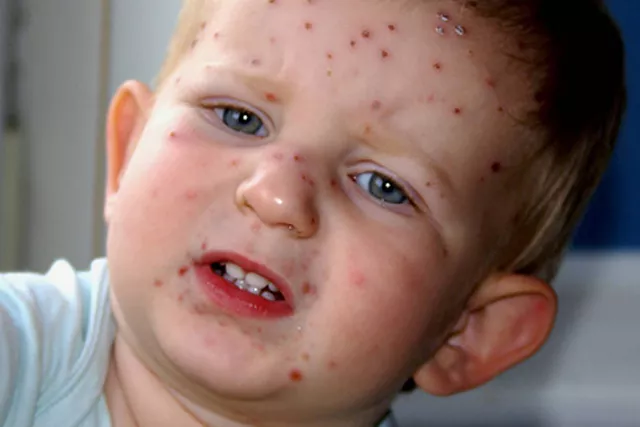Causes
Chickenpox is caused by a virus named varicella zoster virus. Contagious in nature, the infection can pass on until all blisters have crusted over and spreads through saliva, coughing, contact with blisters and sneezing.
High-risk factors
- Contact with an infected individual
- Chickenpox is usually seen more in children
- People with a weak immune system due to any illness / medication
Symptoms
- Clusters of red/ transparent fluid-filled blisters that appear all over the body
- Fever
- Sore throat
- Cough
- Stomach ache
- Headache
If you notice any unexplained rash that is accompanied by the above symptoms or fever on yourself or anyone in your family, seek medical help immediately.
Pregnant women should mandatorily seek medical help as chickenpox infection can harm the foetus.
Managing the infection
- Do not go to office/ public places to avoid infecting others
- Parents are advised to keep their children out of school and daycare
- Regular application of unscented lotion
- Wear loose, soft cotton clothing
- Maintain good hygiene habits at home to avert further infection
- Wash bedsheets, bath linen and towels used by the infected person with hot water and disinfectants
- Fumigate
- Neem leaves are a natural antibacterial
Antiviral drugs may be prescribed to those who experience complications from the virus, or who are at risk for adverse effects. These patients are usually young children or elderly, or have underlying medical issues. Hospitalization may be needed in severe cases.
Prevention
- The chickenpox vaccine prevents chickenpox in 90 percent of children who are infected by it.
- It is important to be cautious and keep distance by limiting contact with the infected people. This can be difficult as chickenpox cannot be identified by blisters unless it has been contagious for days.
- Over the counter medications or ointments are prescribed to provide comfort from itching.
- Pregnant women, children and child care workers need to be more careful as they are more prone to chickenpox.





